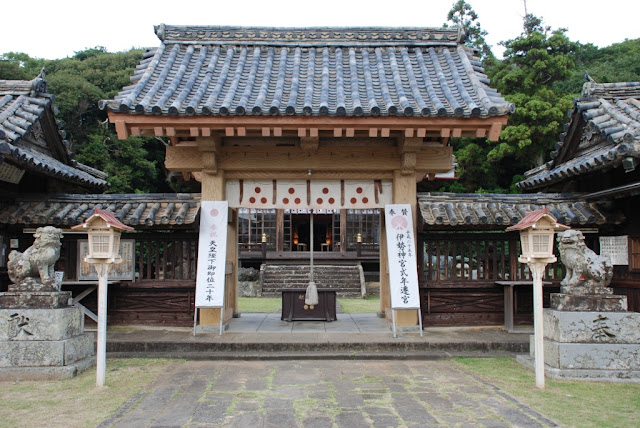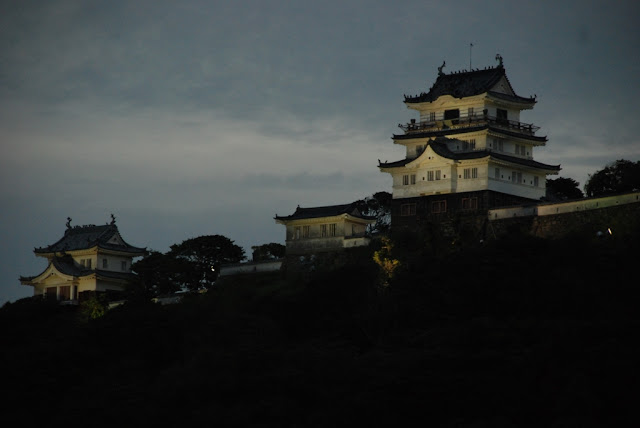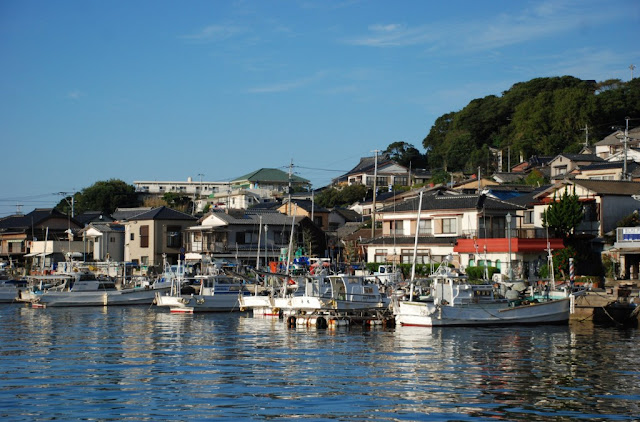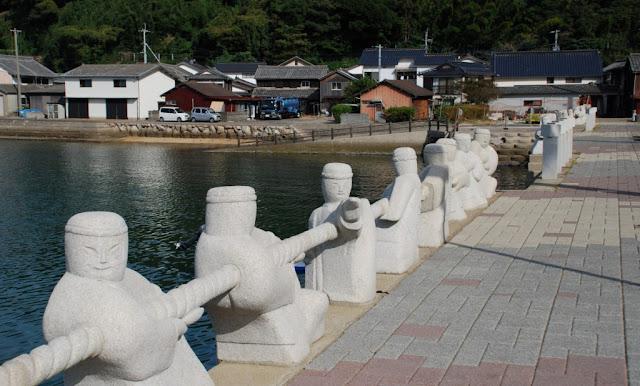The day after the festival we
left Nagasaki on what was to be Edwin and Melissa’s shakedown and our final leg
of this 4-year cruise. The seas were calm and the islands gave us wind and wave
protection, so nobody got seasick and we all enjoyed the sunshine and the
scenery.
Via Mie we sailed to Hirado, passing Sasebo and the the 99 islands.
In Hirado we were lucky again, finding a berth on a pontoon, so we could easily get on and off to visit the sights of this town full of culture and history. Being Dutch it was double worth it, reading up on historical facts that Dutch schoolteachers never mention. So we did the castle, the museum, the Dutch well, the Dutch bridge and a temple or 2. E & M had many firsts, one of them a big Japanese bath on the topfloor of the Kokusai Kanko Hotel. In Nagasaki they’d come with us to the sento (public bath house), but it was very old and basic (and the water too hot!) In Mie friends took us to their home and they learned to wash and bathe with their knees in their ears. This superbath came with towels, soap and shampoo and lots of creams and lotions to try. A tub to do laps in and a wonderful view. (Sorry, no pix)
Scenic temples and a footbath hotspring, just 10 mins walk from the harbor.
Kameoka shrine
The Dutch bridge (it’s the one in the far back) and the Dutch well from the time the VOC had their first trading post in Japan (1603), before they had to move to Nagasaki.
Hirado Castle, once home of the Matsuura clan, destroyed by fire at least once, like all proper Japanese castles. Interesting mostly on the outside. When the crows sit on the roof it looks real spooky, as in scenes from XXX Roma, a popular tv drama.
Hirado port with s/y Alishan seen from the Matsuura Historical Museum
From here it was just a short sail to Madara Island, a place that’s known for nothing, has nothing but a village with 2 grocery stores, a church and friendly locals. And a protected harbor. We just wanted to go somewhere new, where nobody would ever go to. And see Japan at its purest.
The people told us there were usually lots of Green Pheasants around, eating their potatoes and making a mess, but the only ones we saw were painted on the concrete seawall.
And here, at this non-popular, unknown and remote island we shared a meal on the dock with some fishermen of: FUGU SASHIMI, the dish of raw blowfish that can be lethal if prepared wrong. It was delicious and we didn’t die.
From Madara we sailed to the mainland and stopped in Yobuko, the squid capital of Kyushu. We saw them being dried all along the streets and we bought the famous squid dumplings, but we couldn’t entice Edwin and Melissa to a meal of raw ika.
At the morning market the narrow shopping street was lined with stalls selling fish and vegetables, locally made seaweed products and pickles.
Melissa holding a sea urchin. The vendor kindly
offered them to try some uni (urchin eggs)
On the right pieces of whale meat, caught for scientific reasons… for sale.
A lot of grey concrete is used to protect the harbors
from typhoons. What a sore sight it would be without the creativity of locals.
The hardware store tells the pace of time in this town, far from any big city.
Nori eyeing our laundry of dried squid.


























No comments:
Post a Comment